|
LDS scholar Ed Goble has shown that
the name Abraham can be approximated from Egyptian symbols found in
Joseph Smith’s Egyptian Papers, and in the Book of Abraham
facsimiles.
Ed starts with academically recognized Egyptian symbols
and terminology, which he then relates to words found in Hebrew and
Hindu scripture. One train of reasoning leads to the word “Avrekh” 1,
an Egyptian loanword interpreted to mean “bend the knee”, prostrate thyself!
This word appears in the Hebrew Bible in
Bereshit (Gen.) 41:43. Another
train of thought, stemming from the lotus symbol, has led Ed to “Brahma” -
the Hindu god of cosmic reality and creation. Put these words side by side
and what do you get? “Avrekh”, “Brahma”. Together, one word
seems to supply what
the other lacks in simulating the name “Avraham” (Hebrew
transliteration of the patriarch’s name).
Biblically speaking, no one doubts Avraham is to be counted among “your
mighty men” (“Abirekha”,
YirmehYahu (Jer.) 46:15) prone to fall “upon his
face”
(Genesis 17:17, KJV), but one wonders if somebody long ago
couldn’t have perceived in a symbol of Egypt, something that resonated a
little more perfectly with Hebrew scripture, something which came closer to
imitating the name “Avraham”. This article presents what that something
could have been.
Who Were the Ah-meh-strah-ans, and what did they see in
the lotus and papyrus plants?
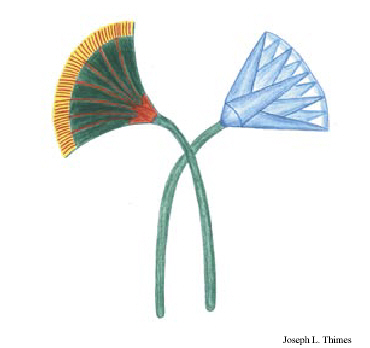
The
lotus and
papyrus plant bouquet is a known symbol of Upper and Lower Egypt. 2 See for example the “Abraham in
Egypt”
explanation appearing in Abraham Facsimile No. 1, Fig. 10, and Facsimile No.
3, Fig. 3. Notice also the little Mormon addition to Facsimile No. 2, Fig.
2. It’s a libation stand with just a hint of a bouquet. The sacred and
useful plants grew near the western and eastern banks of the Nile River.



Bouquet symbol interpreted
as “Abraham in Egypt”
appearing in Figures 10 and 3 of
Book of Abraham Facsimiles
1 and
3 respectively. The facsimiles come from
an Egyptian funerary
Book of Breathings
in Joseph Smith’s possession. The little libation stand and truncated
bouquet (otherwise similar to the one in Facsimile 1) was added to Facsimile
2,
Figure 2 to fill in a missing portion of the illustration. Round Facsimile 2
is a
Book of the Dead
hypocephalus
illustration.
Imagine yourself high above the Nile
looking down. Have you ever considered that the river and its delta look
like an enormous plant? The river resembles a very long stem. The delta
spreads out like a lotus flower or papyrus clump.
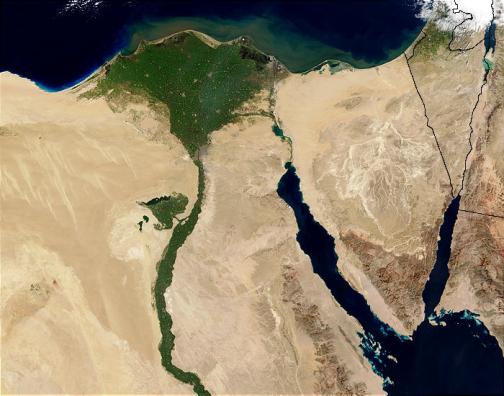
In
case you missed the Sunday school lesson on the topic, the
Ah-meh-strah-ans
(a name revealed through the Prophet Joseph Smith 3) were “the
Egyptians” who placed esoteric meanings on the symbols of mummy funerary
texts like the ones that Joseph Smith came to hold. The fact is, the Joseph
Smith funerary papyri do not date to the time period of Abraham, but much,
much later. 4
We could call the
Ah-meh-strah-ans, “the esoteric order of ha-Mistrim”. “Ha-Mistrim” is Hebrew
for “the Egyptians”. This “Egyptian” group in particular, claimed to be the
keepers of astronomical knowledge passed on from the prophet Avram (Abram).
You'll want to read
Josephus,
Antiquities of the Jews, Ch. II.3, Ch. VII.2, Ch.
VIII.2 to catch up on the tradition that Abram acquainted the
Egyptians
with
“the science of astronomy”.
Joseph Smith’s
Ah-meh-strah-ans had an arcane language with an adapted system of symbols. Their
esoteric “Egyptian” was not your
standard Egyptian.
Though the
Ah-meh-strah-ans might have actually lived in, or near the 2nd
century BCE, they claimed to connect to the Mitsrim (Egyptians) of Avram’s
day. It appears they were
familiar with Hebrew and Greek, and even claimed
to possess some terminology spoken by Adam. Some of the Ah-meh-strah-an
society likely congregated at
Alexandria and frequented the
great libraries there.
If there was a fire that truly destroyed the scroll of the Sepher Avram
(the Book of Abram), it was at Alexandria
-
not Chicago.
There is no academic
difficulty connecting the lotus and papyrus plant symbol to “Egypt”. Joseph
Smith got that right! But how did the Ah-meh-strah-ans also come to discern
“Abraham” in the symbol?
Perhaps their train of
epiphanies went something like this: They understood that in some funerary
art, the right side of the bouquet symbol represented the eastern bank of
the Nile, the left, the western shore. The
eastern and western shores of the mighty river related to the daily passage
of the papyrus solar barge, which appears to move from sunrise to sunset in
the Egyptian sky.
In both facsimiles No. 1
and No. 3 of the Book of Abraham, the bouquet bends to the left –
which could figuratively indicate the direction of the solar boat’s passage
(east to west). So the symbol of the bending bouquet could have suggested
not only the river, with its eastern and western shores, but also the
passage of the papyrus boat carrying the sun. To the Ah-meh-strah-ans, the
symbol could have stood for
Egypt
as “the ford of the sun”. This fits perfectly with something else the lotus
is known to have signified – the sun!
In Hebrew scripture there is a word that can be
translated either “ford” 5 or “ferry boat”. The word is
“avarah”. See 2
Shemu’El 19:19,
2 Samuel 19:18, KJV. See also “ferry-boat” translated
from the Greek, Septuagint, II Kings 19.18. The word is related to
the name “Ever”, “Heber”
(Luke 3:35) and “Ivri”, “Hebrew” – suggesting,
“from beyond a river”, or “one who crosses or passes through a body of water
to the other side”. (Bereshit (Gen.) 14:13)

The shores of the Y’or at night
In
Hebrew scripture, the Nile is called “Y’or”
(an Egyptian loan word), as in “ha-Y’or”, translated “the river” (KJV)
or “the River” (Koren). See for instance
Bereshit (Gen.) 41:1. But
“Y’or” to the Hebrew listener sounds sort of like “or” which means “light”,
as in “or ha-hamah”, “light of the sun”.
(Yesha’Yahu (Is.) 30:26)
Here the poetic Hebrew word for “sun”, “hamah” appears. This
description of the sun connotes “hom” or heat.
(Iyov (Job) 24:19) The
name “Ham” can be seen as a masculine version of “hamah” (sun,
warmth, source of heat). According to Leptogenesis (the
Book of Jubilees) the descendents of Ham, were to occupy hot, tropical or
arid lands in the south. To quote the priestly writer:
“This is the land which
came forth for Japheth and his sons as the portion of his inheritance which
he should possess for himself and his sons, for their generations for ever;
five great islands, and a great land in the north. But it is cold, and
the land of Ham is hot, and the land of Shem
is neither hot nor cold, but it is of blended cold and heat.”
Leptogenesis (Jubilees) 8:29-30
Here the priestly author (who understood the requisite
seasonal ordinances of Torah – the Law) correctly fixed the inheritance of
Shem in a temperate land, in contrast to the hot inheritance of Ham
6.

Egyptian blue lotus (water lily)
As
previously mentioned,
the lotus (technically a
water lily) not only represented Egypt, but was
an important Egyptian symbol for the reviving sun. No kidding! The lotus
closes at night and opens in the day. Naturally it was seen to represent the
sun in his passing and rising – his awakening or resurrection! The Ah-meh-strah-ans would
have understood that in representing Egypt,
the papyrus plant and lotus stood for more than the
Nile
ford or flood plain 7. Together the botanical tokens symbolized
the papyrus sun boat ferrying across the Egyptian sky.

Solar bark
So
it wouldn’t have been too hard for the multilingual Ah-meh-strah-ans to
perceive “avarat ha-hamah” or “the ferry boat
of the sun” in the
papyrus - lotus bouquet symbol of
Egypt. With the sun put in masculine form, the Hebrew
expression becomes simply “avarat
Ham”.
Egypt
is thus Hebraically described as the “ford
of Ham” or “flood plain
of
Ham”, or “ford of
[the] Sun (masculine)”.
The Hebrew letter “tav” at the end of “avarat” denotes
“of”. “Tav”, the last sign of the Hebrew aleph-bet also happens to be the first letter in the Hebrew word “tamim”,
meaning “perfect”.
As
a rule, the letter “tav” trades places with “hey” in the combination
“avarah” + “Ham”.
When
you mean to say “avarah” of “Ham”, the expression becomes “avarat
Ham”. Is this not an acceptable variation on a theme of
“Avraham”? The Ah-meh-strah-ans needed only to considerer that Avraham was commanded to be “tamim”, “perfect”
in order to justify the letter “tav”.
(Bereshit (Gen.) 17:1)
The
expression “avarat Ham” is similar to the Hebrew words “abir”,
“mighty” and “tam”, “perfect” put together - fitting descriptions of Avraham
and his God!
In
summary, the Ah-meh-strah-ans of Ptolemaic times could have perceived the
name “Avraham” hinted in the symbol of Upper and Lower
Egypt. The esoteric society could have associated the papyrus and lotus bouquet symbol with the Hebrew words “avarat Ham”,
“ford of Ham”, whose eastern and western shores were passed each day
by “avarat ha-hamah” or “avarat hom”, the “ferry boat of the
sun”, the great “barge of heat”.
Thus
we have the name “Abraham” esoterically “in Egypt” (the symbol):
“Avraham”
=
אברהם
= “father of a multitude” (Bereshit (Gen.) 17:5) sounds similar to
“avarat Ham”
=
עברת-חם
= “ford of Ham” - which, as it
happens, fits the
scriptural fact that the land was “under water” when it was
first
discovered by the daughter of Ham.
(Abraham 1:24)
The Ah-meh-strah-ans were human too!
On Ah-meh-strah-an cosmology:
Of
course the
Ah-meh-strah-ans, named in Joseph Smith’s
Egyptian papers, were to some extent the
product of their time and environment. If they thought the sun literally
traversed the sky in a papyrus reed boat, returning by way of the underworld
each night, this should be appreciated in historical and religious context.
(Qohelet (Eccl.) 1:5) It’s ok to doubt such cosmology, but we should also
consider that the
Ah-meh-strah-ans (unlike others who thought of themselves as Mitsrim, or Egyptians)
may have treated such ideas as simply figurative.
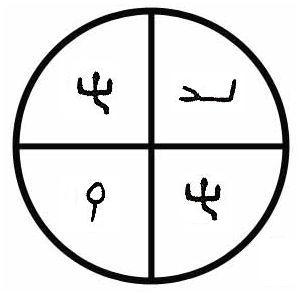
The Ah-meh-strah-an symbol of the earth “under the government of another…”
The four quarters in relation to the
characters of the sacred
Tetragrammaton. “Yah.t”,
an Egyptian word for “earth”, is somewhat similar to the sacred name of the
Hebrew God.
(Michael D. Rhodes,
“The Joseph Smith Hypocephalus ... Twenty Years Later”, pg. 8) Is this one reason the Ah-meh-strah-ans chose to
associated the divine name with the earth?
See
TETRAGRAMMATON AND EARTH.
Apparently the Ah-meh-strah-ans had inherited from “the most aged of all the
fathers” the advanced concept of a “power of attraction” or “affinity”
between heavenly bodies. They may have even understood that the earth
revolves. (Joseph Smith’s Ah-meh-strah-an Alphabet,
Second part, 5th Degree,
pg. 24;
Second part, 4th Degree,
pg. 27;
Second part, 3rd Degree,
pg. 30;
Second part, 2nd Degree,
pg. 31;
Second part, 1st Degree,
pp. 33-34)
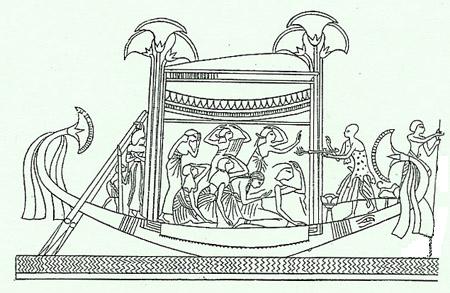
There is a point of view which says, the sun is always
“up” in the sky. Tis we, on earth, who ferry each night beneath the upper
world. But who in ancient times, besides the Ah-meh-strah-ans, could have
believed such a thing?
(Helaman 12:14-15)
The Ah-meh-strah-ans learned of distant creations far greater and
older than the
sun and earth. They knew that the Eternal
had aided Avram's sight and understanding. They read these strange words
written by
the Hebrew prophet who peered into Urim v'Tumim:
“And I
saw the stars that they were very great…” (Abraham 3:2)
Did Avram see the fiery mount of our galactic home, the
heart of which our eyes cannot see? Did
he see orbits within orbits, and the vast nebular curtains shielding our
comparatively tiny world (like a particle of sand) from cosmic bodies to radiant to look upon? did he see
what the Latter-day Seer described, but which few have read, and fewer
still have understood:
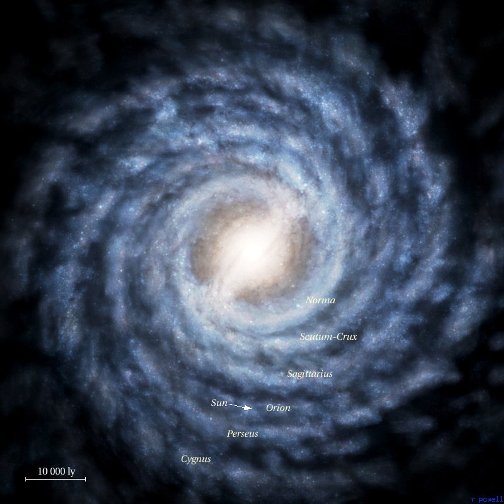
Our galaxy –
the Milky Way
“God has
said let this be the centre for light, and let there be bounds that it may
not pass.
He hath
set a cloud round about in the heavens, and the light of the grand
governing of fifteen fixed stars centre there; and from there it is drawn,
by the heavenly bodies according to their portions; according to the
decrees that God hath set, as the bounds of the ocean, that it should not
pass over as a flood, so God has set the bounds of light lest it pass over
and consume the planets.”
(Joseph Smith’s
Grammar and Alphabet of the Ah-meh-strah-an
Language,
2nd Part,
5th Degree, “Flos isis”,
pg. 25)
On Ah-meh-strah-an anthropology:
The
Ah-meh-strah-ans could have been influenced by the Alexandrian translation
of Hebrew scripture - the venerable, but imperfect Septuagint.
As a result of this renowned work, it would not
be surprising if the esoteric order had assimilated less than accurate
terminology; such as that resulting from the Greek translation of the
Hebrew word “Kasdim”. The Kasdim were the descendents of Kesed (Chesed,
KJV). The translation of this Semitic
people’s name has resulting in an overplus of terms passed on to KJV
readers as “Chaldeans”, “Caldees” and “Chaldea”.
We shouldn’t put too much historical or geographic stock into these later
terms. We should consider that there were earlier, less
redacted 4 versions of the Sepher
Avram.
I
for one would very much appreciate a copy of the
Sepher Avram closer to
the Bronze Age original, a work better adapted to a Hebrew speaking audience
- not the general readership of the Times and
Seasons newspaper. I personally wouldn’t mind
if the anachronistic funerary facsimiles were relegated to an appendix
treating later redactions of the sacred book. This would include the
Book of the Dead
hypocephalus
(“funny round thing”) with its embedded phallic symbols. I
would keep in the appendix Joseph Smith’s Ah-meh-strah-an astronomical
explanations which link to ancient traditions about the things Avram taught in Mitsraymah (Egypt).
See Abraham 3:15.
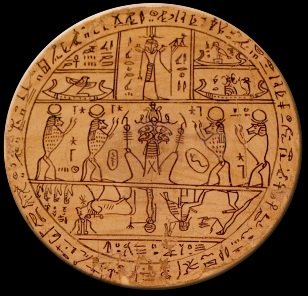
Hypocephalus
of Tasheritkhons (circa 305 to 330 BCE), British Museum, London. This
hypocephalus is similar to
the Book of the Dead hypocephalus
reworked as
Book of Abraham
Facsimile No. 2. Hypocephali in general represent all that the sun seems to
encircle, with an eye on the world of the living and the world below - that
is, on everything
“under the sun”. The
Ah-meh-strah-ans reinterpreted the hypocephalus giving it greater cosmic
scope. Even so, the Book of Abraham facsimile
remains an anachronistic crudity that fails to do justice to
the vision that Avram saw by Urim v’Tumim, and
by the
hand of
the Eternal
upon his eyes.
(Abraham 3:1-2,
12)
On Ah-meh-strah-an geography:
It’s
possible the Ah-meh-strah-ans accepted the dominant Jewish tradition of the
time; that Abram’s Ur was in southern Mesopotamia – an arid flatland with reeds near the
river, not unlike Egypt. If so, it doesn’t mean
this is historically true. There were many ancient Middle Eastern sites with
names similar to “Ur”.
The city of Urkesh
8 near Haran
9 had long been lost and forgotten by the 2nd
century BCE. The name “Ur-kasdim” is likely a biblical
redaction – an anachronism that later mutated into “Ur
of the Chaldees”. In time, literary attempts would be made to try and
reconcile the “Ur-kasdim” problem 10.
Professor Hugh Nibley tried to draw our attention to the more scripturally
consistent, northern Mesopotamian setting for Terah (Abram’s father)
and his family. An “Ur in
Haran” (Haran)
seems to fit the Bible and the Ebla records best. (Abraham
in Egypt, “Ebla Changes Things”, pp. 84-85,
“Pharaoh and Canaan – Visiting Celebrities”, pg. 238)
See also Hoskisson, Paul Y., “Where Was the Ur of Abraham?
”,
Ensign, July 1991, pp. 62-63.
It
is worth considering the Book of Abraham
place names “Potiphar’s Hill” and “Haran” (Hebrew for
“mountaineer”, the same as Abram’s brother’s name).
(Abraham 1:10;
2:4)
Haran is spelled differently in Hebrew than the Akkadian
place name
Haran. Unfortunately,
you will find both names spelled the same in the
KJV and therefore in the English Book of Abraham.
These places fit the highlands of northern
Mesopotamia near
Haran.
(Abraham 2:5)
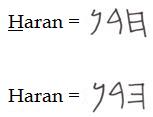
Pre-exilic Hebrew spellings of Haran and Haran
Spelled with a Hebrew “hey”, “Haran”,
so named by Avram’s
family,
was a hilly pastoral land
near the city
Haran
(spelled with a “het”).
According to the Book of Abraham, Abram “departed out of Haran” when he was “sixty and two years old”.
(Abraham 2:14)
After winning souls (making converts) in the big city, Abram “was
seventy and five years old when he departed out of Haran [Haran]”.
(JST Genesis 12:3,
verse 4, KJV,
Abraham 2:15, see also 1835
edition Doctrine and Covenants, Lectures on Faith, pg. 31)
Could
the account in Sepher ha-Yasher (the Book of Jasher) which
tells how Avram left Haran
twice, stem from an earlier tradition that Avram left Haran before he left
Haran? It stands to reason that in time, rural Haran near
Haran
would get identified with the renowned
city. (Jasher XIII.5, 26)
Hebrews might have perceived a play on words between that name “Haran”, and “harar” meaning to burn,
or
to glow. The parched, or glowing city is a fitting second meaning in light of the neighboring city of
“Ur”, flame, light.
Unto
what should we liken the
“Ur
in
southern Mesopotamia”
tradition? It
is comparable to Mormons
(starting with RLDS, now called “Community of
Christ”) repositioning the Book of Mormon
“land Camorah” (later spelled
“Cumorah”) in
Southern Mexico. Original sources clearly place
Cumorah (and the authentic literary setting of the
Book of Mormon in
general) in Joseph Smith’s boyhood lake country of temperate
North America.
(LDS Doctrine and Covenants 128:20, Book of Mormon,
1830 edition, Mormon, Ch. III, pg. 529)
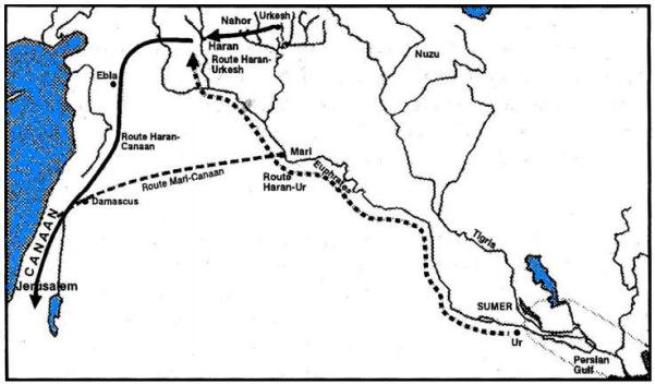
Solid lines
represent Abram’s more direct journey to the land of Kena’an (Canaan) from Ur-Kasdim (Urkesh) near
Haran
(in the highlands of northern Mesopotamia).
Broken lines represent the-out-of-the-way traditional trek from southern
Mesopotamia, to Haran
before going on to Canaan, bypassing the Mari route to
Canaan. See LDS Bible
Map 9.
Josephus quotes the historian
Nicolaus of Damascus
as saying, “Abram reigned at Damascus, being a foreigner, who came with an army out of the
land above Babylon, called the land of the Chaldeans.” (Antiquities
of the Jews, Ch. VII.2)
Notes and References
[1]
The Egyptian loanword “avrekh”
(Bereshit (Gen.) 41:43) sounds similar to the
Hebrew word “barakh” meaning “kneel” or “bless”.
(2 Divre Hayamim (2 Chr.)
6:13)
Ed Goble’s “Avrekh” connection
helps us understand the unusual interpretation of a standard hieratic symbol listed in Joseph Smith’s
Grammar and Alphabet of the Egyptian Language
(pp. 2,
9)
The Egyptian symbol is there interpreted in “Ah-meh-strah-an” to mean “Ah
brah – oam – a father of many nations …” The “Ah-meh-strah-ans” are “the
Egyptians” peculiar to Joseph Smith’s
Grammar and Alphabet of the
Egyptian Language.
The name “Avraham” is openly interpreted to be a compact
form of “av-hamon goyim” = “father of a multitude of nations”. (Bereshit
(Gen.) 17:5) But “avir-hamon” = “mighty one of a multitude” fits just as
well, if not better! This interpretation seems to infer divinity.
(E.g. Bereshit (Gen.) 49:24) To avoid offending religious sensibilities
by suggesting that Avraham was made a god under
“El elyon” (the
“most high God”,
Bereshit (Gen.) 14:19;
consider also the relativity of godhood in Shemot (Ex.) 7:1,
Bereshit (Gen.) 17:7;
27:28-29), the meaning “father of many nations” is preferred.
The New
Brown – Driver – Briggs – Gesenius Hebrew and English
Lexicon, 87,
אַבְרָם,
pg. 4.
[2] Nibley, Hugh,
Abraham in Egypt,
pp. 386, 444-450.
[3] Smith Jr., Joseph, Grammar and Alphabet of the Egyptian Language, 5th Degree,
pg. 6.
[4]
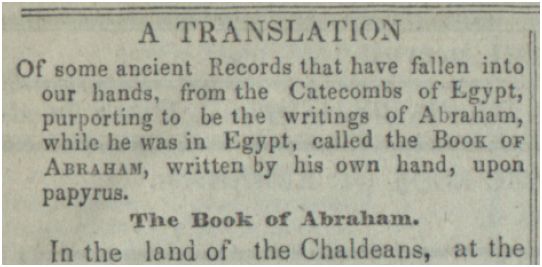
Joseph Smith’s original introduction to the
Book of Abraham published in the March 1, 1842
edition of the Times and Seasons
newspaper reads:
“A TRANSLATION Of some ancient Records
that have fallen into our hands, from the Catecombs of
Egypt, purporting to be
the writings of Abraham, while he was in Egypt, called
the BOOK OF ABRAHAM, written by his own hand, upon papyrus.”
(emphasis
added)
Note
the use of “Records” plural in the T&S
introduction. The published Book of Abraham
featured facsimiles from more than one Egyptian scroll. The
translated depictions alone qualify as the “ancient Records … from the Catecombs [catacombs] of Egypt”
that the introduction refers to. It is the peculiar translation of these
graphic “Records” which purports being the “writings of Abraham [Abram]”.
The
Prophet would later write, “Were I an Egyptian, I would exclaim … Enish-go-on-dosh,
Flo-ees-Flos-is-is; [O the earth! the power of attraction, and the moon
passing between her and the sun.]” (T&S,
November 1, 1843, pg. 373) But these “Egyptian” terms do not represent
academically recognized Egyptian. There were more than one ancient people
who today can be referred to as “Egyptians”.
Who were Joseph Smith’s “Egyptians”? The Prophet revealed them to be “the Ah meh strah ans” 3.
Joseph Smith’s
esoteric Ah-meh-strah-ans associated unusual meanings with symbols appearing
in Egyptian funerary scrolls, the sort of records Joseph Smith came to hold in
Kirtland,
Ohio. The
Ah-meh-strah-ans related some of their interpretations to
Avraham. Their redacted
and augmented version of the Sepher Avram
(book of Abram)
purported to be the writings of the Hebrew prophet, written by his own hand,
while he was in Mitsraymah (Egypt).
But the Ah-meh-strah-ans (~200 BCE) supplemented the
Sepher Avram
with things which did not date back to the Hebrew prophet (2000 to 1700 BCE).
Nowhere in the Joseph Smith Papers
(J.S. Journal
etc.) does the Prophet explicitly state that he actually had the ancient
scroll of Abram in his possession. The Book of
Abraham (the very use of the name “Abraham”,
instead of Abram, implies a later work) came to the studied Prophet by inspiration.
The
work of “translating” mentioned in the Prophet’s journal could
simply refer to the
Ah-meh-strah-an Alphabet and Grammar translation project.
(See Joseph Smith Journal, 1 October 1835 - Thursday,
17 November 1835 - Tuesday,
19 - 20 November 1835 - Thursday - Friday)
The “record of Abraham” that
Joseph Smith showed (along with the scrolls) to his Hebrew instructor J.
Seixas, was likely the 1835 manuscript of the
Book
of Abraham.
(Joseph
Smith Journal, 30 January 1836 - Saturday)
This manuscript featured hieratic Egyptian characters in the left margins
(transcribed from a
Book of Breathings).
These characters came from the same Book of Breathings that
facsimiles No. 1 and No. 3 were taken from. The sparse selections of
hieratic characters were arguably copied shortly after the manuscript had been
written down.
(Joseph
Smith Journal, 26 November 1835 - Thursday)
The
“records [plural] of Abraham” that Joseph Smith showed visitors, likely
refer to the Ah-meh-strah-an Alphabet and Grammar in addition to the 1835
Book of Abraham manuscript.
(Joseph
Smith Journal,
3 February 1836 - Wednesday)
No mention is made by Joseph Smith of a papyrus scroll of Abraham among the
“ancient records” that he showed numerous visitors.
Joseph Smith Journal, 19 October 1835 - Monday,
24 October 1835 - Saturday.
So
how did Mormons come to suppose that the Prophet Joseph had an ancient scroll of
the Book of Abraham
in his possession?
It’s
certainly true that brethren other than Joseph Smith (e.g. Oliver Cowdery)
publically stated that the scrolls
of Abraham and Joseph of Egypt accompanied the mummies that came to Kirtland. Joseph Smith allowed the saints, to come to this
conclusion on their own. Had the saints asked Joseph more questions about
the origin of the Book of Abraham,
they may have gotten a more detailed explanation. Here, we might consider that Avram (later
named Avraham) allowed Par’oh and Avimelekh to conclude that Sarai
(Sarah) was his
sister. She was of course, but not in the way the others presumed.
(Genesis 12:18-20,
20:12, KJV)
Similarly, the Prophet Joseph Smith’s introduction to the Book of Abraham is true, but in a way that is different from how the cursory reader might first interpret.
History of
the Church
statements
HC
2:236 and
2:347-351 cited by both Mormons and Anti-Mormons, are not original statements
by Joseph Smith. these are well-meaning extrapolations by other men. Please note that since the 2013 edition, the words “See History of
the Church, vol. 2, pp. 235, 236, 348-351”
no longer appear in the
Book of Abraham’s introduction.
HC 2:347-351
is particularly disconcerting. It has led more than one prominent LDS
scholar to suppose (at a glance) that the account represents a statement by
Joseph Smith. Only the first couple of paragraphs come from the Prophet’s journal
(31 December 1835 - Thursday);
after which the account launches into the topic of “Egyptian mummies
and ancient records”, giving
readers the impression that they are still reading the Prophet’s words.
A
recent edition of Hugh Nibley’s Message of the
Joseph Smith Papyri – An Egyptian Endowment
notes the attribution error. (See John Gee’s Introduction to the Second
Edition, xxi) The words that HC
quotes are in fact, those of Oliver Cowdery, published in the
December 1835
edition of the Messenger and Advocate,
under the heading “Egyptian Mummies and Ancient Records”.
Elder Cowdery describes in some detail “characters” from a scroll which he
implies were the writings of Joseph in Egypt – “This record is
beautifully written on papyrus with black, and a small part
red ink ... many characters or
letters”, writes Brother Cowdery, “exactly like the present, (though probably not
quite so square,) form of the Hebrew without points.” The “characters” and
“figures” which Elder Cowdery describes, we now know belong to a Book of the
Dead, written in hieratic Egyptian.
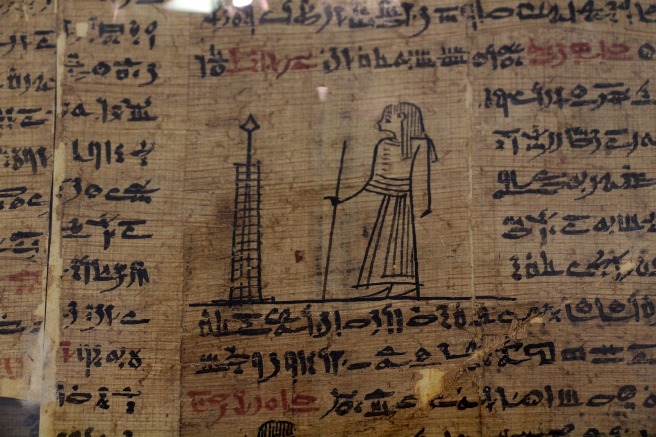
A portion of a
Book of the Dead
from the
Joseph Smith papyri.
Oliver Cowdery interpreted the image as representing “Enoch's Pillar, as
mentioned by Josephus”. The account in Josephus attributes the
antediluvian “pillar of
brick” and “the pillar of stone” to the descendents of Shet (Seth) in
general. (Antiquities
of the Jews, Ch. II.3) Elder Cowdery also imagined that he saw
many Hebrew letters in the Egyptian writing, though “not quite so square” as
the present form of Hebrew. Elder Cowdery was mistaken! While it is true
that Elder Cowdery was
given the opportunity to “assist to translate”, this doesn’t mean that his
opinions should receive the same weight as Joseph Smith’s.
(LDS Doctrine and Covenants 9:2-6)
When Oliver Cowdery saw the following written on the papyrus scroll

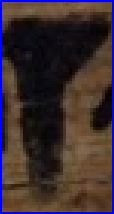
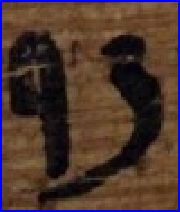




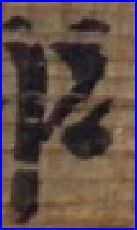

did Elder Cowdery think he was seeing the following Hebrew letters?


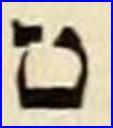


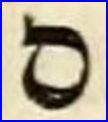



Letters appearing in
Manual Hebrew Grammar (published 1833)
by Joshua (James) Seixas.
After analyzing every relevant statement from the best sources, e.g. the Joseph Smith Papers,
I find nothing contradicting
Ed Goble’s assessment that there was no papyrus scroll of
the Book of Abraham
in Kirtland. The text of the Book of Abraham came
to the Prophet Joseph Smith by
means that did not require the physical presence of the original, or even an
ancient copy of the Sepher
Avram. Consider
how the Prophet succeeded in producing a translation of an ancient record
made by Yohanan (John) the beloved
disciple. See the heading to
LDS Doctrine and Covenants section 7.
What Joseph Smith had in Kirtland were mummy funerary scrolls (i.e. the
Book of Breathings and the Book of the Dead) - no
Hebrew surprises!
Joseph Smith may not have needed Urim v'Tumim at this point. He had become a seer stone!
We
can accept on faith that the original Sepher
Avram was written by the hand of Avram while he
was in Mitsraymah (Egypt), but the work Joseph Smith published in the
Times and Seasons
is an inspired augmentation of an ancient work “purporting to be ... the BOOK OF ABRAHAM”.
The Book of Abraham is, like biblical scripture, a
redaction performed centuries later. The Prophet Joseph himself edited
and added to the work prior to its 1842 publication.
(See
1835
Book of Abraham manuscripts)
The Prophet referred to the published
Book of Abraham
as a work of “present revelation”:
“…
if we believe in present revelation, as published in the Times and Seasons
last spring, Abraham, the prophet of the Lord, was laid upon the
iron bedstead
[Hebrew: “eres barzel” = “couch of iron”]
for slaughter … -ED [Joseph Smith, Editor]” (Times and Seasons, “Persecution of the Prophets”, September 1, 1842, Vol. 3, pg. 902)
The
Anubis, lion couch, canopic jars vignette that was reworked as facsimile No. 1 in the
published Book of Abraham,
serves as a substitution for
“the
representation” and “the figures” that Abram
(Avram) refers to in his
record. Abram, in fact, refers to only one “representation” and set of “hieroglyphics”;
and these were presented at the beginning of his record.
These “hieroglyphics”, we are told, were called by the Semitic Kasdim “Rahleenos”.
The term “Rahleenos” sounds similar to the Hebrew, “Raah-li-nes”
=ראה לי נס
= “show me a sign”, or “Raah-l’nes” =ראה לנס
= “looking for a sign”. There is no mention of other facsimiles.
(Abraham 1:14)
Facsimile No. 1 is not Abram’s original Bronze Age illustration.
Neither is the facsimile identical to any vignette the Ah-meh-strah-ans
might have used in their version of the Sepher
Avraham. The Book
of Breathings facsimile simply suited the
Prophet’s need in simulating, or reconstructing an English translation of an
ancient version of the Book of Abraham.
There were other Egyptian works of art like it. See the
restored Book of Breathings
facsimile below.
The
original Sepher Avram
was fundamentally a Hebraic work. The main text of the
Book of Abraham still is,
in key respects. The majority of the “Egyptian” stuff is peripheral.
What the Prophet finally published approaches an Ah-meh-strah-an version, in
that it features similar funerary vignettes and commentary from a later time period.
Joseph’s mummy scrolls were filled with the same kind of symbols and images
that the Ah-meh-strah-ans uniquely interpreted and enlarged upon in their day.
Like
the Septuagint (the Greek translation of Hebrew scripture) the
Ah-meh-strah-an Book of Abraham
may have been compiled with a Goy (Gentile) audience in mind. A copy of the work may
have even been made available at
Alexandria, as Ed Goble suggests. This may help
explain why Joseph Smith styled his Book of Abraham after an Ah-meh-strah-an version featuring anachronistic funerary
vignettes (reinterpreted) from more than one scroll.
The people
“sought for things that they could not understand.”
The Prophet Joseph Smith was keen to, if
not urged by his American community’s 19th century Egyptian
interest (fixation).
(Hauglid, Brian M. “THE BOOK OF ABRAHAM AND THE
EGYPTIAN PROJECT: “A KNOWLEDGE OF HIDDEN LANGUAGES”, See in particular the
section “Nineteenth-Century
Egyptomania and the Joseph Smith Papyri”, pp.
477-481)
So
the Mormon Book of Abraham
couches a Hebraic pearl in a quasi-Egyptian clamshell. It is a work
embellished with anachronistic funerary art and nonstandard interpretations
of Egyptian symbols. The round
Book of the Dead hypocephalus
(Facsimile No. 2) inserted between the folds of text is
not the original pearl of the Book of Abraham.
It is hoped that those who are attracted to the Egyptian facsimiles
will eventually take an interest in studying the sacred Hebraic record.
A VIGNETTE
BORROWED FROM A BOOK OF BREATHINGS
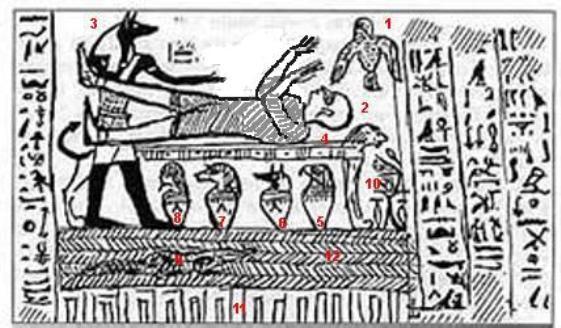
The above vignette comes from a
known Egyptian funerary text. The restored facsimile along with its inspired
interpretation were not part of the original
Book of Abram (Sepher
Avram). The facsimile and funerary text date
more recent than the time of the biblical prophet. The facsimile serves as a
substitution for the illustration that accompanied the
original Sepher Avram
(2000 to 1700 BCE).
EXPLANATION of the BOOK OF AVRAHAM ADAPTATION
Fig. 1. The messenger of
the Eternal (represented by the living
Ba or personality of the deceased).
Fig. 2. Avram (represented by the fully clothed mummification subject
named Hor, resurrected as
Osiris) fastened upon an altar
(lion couch). Consider the Hebrew wordplay between “harEl” (mount of God, altar-hearth),
“ariel” (altar), and “ariEl” (lion of God). See for instance YehezqEl
(Ezek.) 43:15-16, Divre Hayamim
(1 Chr.) 11:22.
Fig. 3. The idolatrous priest of Elqanah (represented by
Anubis,
aiding in the resurrection of Osiris)
attempting to offer up Avram as a sacrifice. In the original
vignette (restored) Anubis, the super intelligent, divine family pet,
stands between
the lion couch and the animated legs of Osiris Hor.
Anubis is about to help Osiris stand on his feet.
In Joseph Smith’s adaptation, the idolatrous priest
stands behind the altar.
The Prophet Joseph Smith has here taken a Book of Breathing vignette featuring immortals and transformed
it, Ah-meh-strah-an style, into a scene of mortal drama.
Fig. 4. The altar (lion couch)
for sacrifice by the idolatrous
priests, standing before the gods of Elqanah, Livnah, Mayim-m’korah, Koresh
(four sons of Horus canopic jars),
and Par’oh (crocodile,
typically Sobek,
but in this case likely
Horus,
who, in the form of a crocodile, helped gather the scattered body parts of Osiris).
It’s very unlikely that Avram’s
original “representation” depicting “the fashion” of the false gods
(Abraham 1:12-14)
involved
sons of Horus canopic jars. These types of canopic jars
are from a later time period.
The five names associated with the false gods are the names of persons or places; the first four
of which are Semitic. These five ancient names should not be construed as the actual names of idol gods.
Joseph Smith’s “Egyptians”, the Ah-meh-strah-ans, in
their devotion to the God of Avraham, avoided making direct
mention of the names of other gods.
(Shemot (Ex.) 23:13)
It is difficult, if not impossible, in academic
expositions on the subject of Egyptian deities, to avoid using translations
of the names such dieties.
Hebrew scripture permits indirect references to the names of foreign gods in,
for instance,
derogatory wordplay. The multilingual Ah-meh-strah-ans, are not to be abhorred
(Devarim (Deut.) 23:7)
for celebrating the God of Avraham in a kind of religious
syncretism which involved wordplay,
and the viewing of members of the Egyptian pantheon as
personifications of concepts like truth, justice, resurrection, the throne
etc.
Fig. 5. The idolatrous god of Elqanah.
“Elkenah”
(transliterated “Elqanah”)
is a name comparable to “Eliezer”, Avram’s
Damascene steward.
(Bereshit
(Gen.) 15:2)
Both names reference God (El).
“Elqanah” can mean
“God hath created” or “God hath taken possession”.
The
name sounds similar to “El qana”
which describes God as “jealous”, “zealous” or of “ardent love”,
“possessive”.
(Shemot (Ex.) 20:5)
The expression “god of Elkenah”, “el Elqanah” would be redundant (i.e. god of the god ...) if “Elkenah”
were an idol god’s name. “Elqanah”
is a biblical title or name.
See for instance
“El elyon qoneh …”
in
Bereshit (Gen.) 14:19,
and the name in
Shemot (Ex.) 6:24.
“Elqanah”
is the name of a site, or an apostate Semite (possibly a relative of Avram)
who worshipped more than one god.
See
Abraham 2:13.
The scripture in
Abraham 1:20,
is consistent with
“Elkenah”
being a major sponsor of idolatry, distinct from “the gods of the land”.
Fig. 6.
The idolatrous god of Livnah.
Similar to the name in
Bemidbar (Num.) 33:20.
“Livnah”
in this case, is the name of a site, or an apostate Semite (possible relative of Avram).
Abraham 1:5-7,
15
Fig. 7. The idolatrous god of Mayim-m’korah.
See for instance
YehezqEl
(Ezek.) 29:14,
Vayiqra (Lev.) 25:25. “Mayim-m’korah”
in this case, is the name of a site, or an apostate Semite (possible relative of Avram).
Abraham 1:5-7,
15.
Fig. 8.
The idolatrous god of
Koresh.
Similar to the name in
Yesha’Yahu (Is.) 44:28.
“Koresh” in this case, is the name of a site, or an apostate Semite
(possible relative of Avram).
Abraham 1:5-7,
15
Fig. 9. The idolatrous god of Par’oh
symbolized by the tanin (crocodile),
YehezqEl
(Ezek.) 29:3.
The “god like unto that of Pharaoh” is in this case not identical to Par’oh
(Pharaoh).
(Abraham 1:13)
Fig. 10. Avram in Mitsraymah (a lotus and papyrus plant bouquet, the
symbol of Upper and Lower Egypt).
Fig. 11. Designed to represent the
papyrus pillars of heaven, as understood by the Ah-meh-strah-ans
א
[esoteric order of ha-Mitsrim].
Fig. 12. Raqiya
ב,
signifying expanse, or the firmament over our heads; but in this case, in
relation to this subject, the Ah-meh-strah-ans meant it to signify Shama, to
be high, or the heavens, answering to the Hebrew word, Shamayim.
The Hebrew word Shamayim suggests the waters (mayim)
overhead, divided by the raqiya.
Bereshit
(Gen.) 1:7
א
Joseph
Smith, Grammar and Alphabet of the Egyptian
(Ah-meh-strah-an) Language, 5th
Degree,
pg. 6.
ב
Formerly spelled “Raukeeyang”. Joseph Smith exhibits the
Western Sephardic pronunciation of his Hebrew Instructor Joshua
(James) Seixas. See J. Seixas,
Manual Hebrew Grammar, pg.12. The case in which “raqiya”
(firmament or expanse) is pronounced “rau-kee-ang”
(Seixas) dates to Italian and Western Portuguese Jewish communities of
the late 16th century CE. See Aron di Leone Leoni, “The
Pronunciation of Hebrew in the Western Sephardic Settlements (16th
– 20th Centuries). Second Part:
The Pronunciation of the Consonant ‘Ayin”,
SEFARAD, Vol.
68.1, 2008, pp. 163-208.
JOSEPH SMITH
LEARNS TO THINK LIKE AN
AH-MEH-STRAH-AN
THE LAST VIGNETTE FROM A BOOK OF
BREATHINGS

The above facsimile was derived from the last
vignette in the same Egyptian funerary text from which Facsimile No. 1 was
derived – a Book of
Breathings available to the Prophet
Joseph Smith. The facsimile along with its interpretation were not part of the original Book of Abram
(Sepher Avram).
Like the previous vignette (Facsimile No. 1), this vignette dates more
recent than the time of the biblical prophet. There is no mention of this
facsimile (or one like it) in the text of the
Book of Abraham. The facsimile may serve as a
substitution for a vignette that accompanied an Ah-meh-strah-an
version of the Sepher Avraham;
a version that once represented, and named a king, a prince, a
principal waiter, and a slave.
EXPLANATION of the BOOK OF AVRAHAM ADAPTATION
Fig. 1.
Avram (exalted father,
the resurrected deity
Osiris) sitting upon
the throne
of Par’oh
(throne of Osiris),
by the politeness of the king (the deity,
Revelation 3:21), with a crown upon his
head, representing the Priesthood, as emblematical of the grand Presidency
in Heaven; with the scepter of justice and judgment in his hand.
Scripture describes Avraham not only as a prophet but as a meshiah
(anointed, i.e. king and priest,
1 Divre Hayamim
(1 Chron.) 16:16-22,
Tehilim
(Ps.) 105:9-15) Avraham, like Osiris, hears the petitions of the dead.
(Luke 16:22-31)
Fig. 2. King Par’oh (strangely, but appropriately depicted as the goddess
Isis
wearing a head piece like that of the divine mother Hathor),
whose name
is given in the characters above his (her) head.
The name given in the label is
that of Isis.
The label near her head reads “Isis the
great,
mother of the god.”
An appropriate title of the god referred to is “son of Isis”.

M. Rhodes,
The
Hor Book of Breathings.
Note the throne hieroglyph in the name Isis.
Isis in fact is closely
associated with kingship. Isis is represented by the
symbol of the throne.
Par’oh bears the title “son of Isis”. The name Isis
strongly correlates with the name Osiris.
The names of Isis and Osiris both
share the symbol of the throne in their representations. The name of the
immortal son
of Isis and Osiris is
Horus (Hor). In life, Par’oh
was often identified with the name Horus, and in death with Osiris.
In a sense then, the title of Par’oh (son
of Isis) is implied in the characters above the arm of the throne goddess.
The deceased owner of the scroll
happens to be “Osiris Hor”. (Fig. 5.)
Ryan Larsen
observes that the headdress of Hathor can be thought of as a combination of
“characters”.
The
horns and
disk
are in fact combined Egyptian
“characters”
appearing
directly above the head of Isis. Hathor means
House of Horus. Hathor symbolically houses
Horus and thus the living Par’oh
(Great House). Hathor-Isis
represents Horus as also the living Par’oh. The name of Par’oh,
son of Isis, indicated in the emblem above her (his) head, is the name of
Horus (Hor).
Whether you think of the horned emblem as
embracing a solar or lunar disk (“moon disk”, Michael Rhodes, The Hor Book of
Breathings, pg. 23) the symbol nevertheless connects with Horus
the sky
god. But there is more going on with the symbols above the head and raised arm of Fig. 2.
See The Name of the King.
The use of the term
“Par’oh” in Bereshit (Genesis)
describing a king of Mitsrayim (Egypt),
is considered anachronistic.
The appearance of “Pharaoh”
is nevertheless, appropriate in Joseph Smith’s Ah-meh-strah-an styled explanations
of funerary facsimiles, because these facsimiles accompany a version of the Sepher Avram
that parallels terminology found in the King James Translation of the
Masoretic Text - the source of the KJV OT.
The Masoretic Text is a redacted work. No original texts of the Bible are
known to exist today.
Fig. 3. Signifies Avram in Mitsraymah (Egypt) as given also in Figure
10 of Facsimile No. 1. The lotus and papyrus bouquet symbolizes upper and
lower Mitsraymah. The bouquet is also emblematical of the solar bark -
answering to the Hebrew “avarat Ham”. Consider 2 Shemu’El
19:19,
2 Samuel 19:18
(KJV), Yesha’Yahu (Is.) 30:26.
Fig. 4. The goddess
Maat
interpreted as a Prince of Par’oh, King of
Mitsrayim, as written above the hand. What is overtly written to the left of her head is “Maat,
Lady of the western
hill-country [afterlife]”.
Note the hill-county hieroglyph in the column of characters to the left of
Maat’s head:

M. Rhodes,
The
Hor Book of Breathings,
Note the
hill-country
hieroglyph beneath the name Maat.
The Hebrew word for “mountain”, “hill”, or “hill country” is “har”,
which, in an Ah-meh-strah-an way of interpreting, sounds like “
Hor”,
the name of the lofty god-prince.
The name Hor or
Horus
in Egyptian
relates to “haru” meaning “falcon”. Another meaning is “one who is above,
over”. The Hebrew word “har” meaning “high elevation”,
seems similar in meaning.
Above the right and left
hands of Maat are labels which mention Horus (Hor) by name, and the
name of Osiris his father. Thus, written above the
hand(s) of Maat are the divine titles bestowed on living and dead rulers of Mitsrayim
- Osiris, Horus (Hor). In life Egyptian rulers identified with the son
Horus, and in death with the father Osiris.
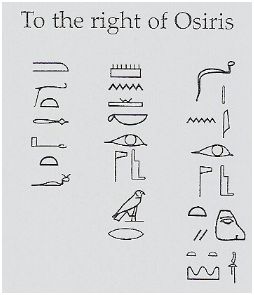
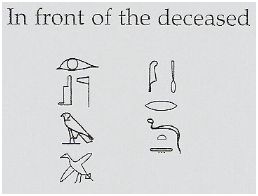
M. Rhodes,
Hor Book of Breathings:
Note the divine throne and princely falcon symbols above the raised right hand of Maat (right of Osiris), and
also above the lowered left hand of Maat (in front of Hor the deceased).
The names of the father (Osiris) and son (Horus) Egyptian deities appear on both sides of the goddess
of truth.
Crowning the head of Maat is the feather of “emet”
(Heb. “truth”). The feather of truth is displayed before the luminary disk,
“ha-or” (Heb. “the light”), which in the Ah-meh-strah-an mind may again
connote the god-prince Hor.
Maat is the goddess of truth, faithfulness, morality
and justice. “Maat” is similar to the feminine Hebrew word “emet” which
means ”truth”, “faithfulness”, “firmness”. “Emet” is akin to the Hebrew “emunah”
which is “faithfulness”, “firmness”, “steadfastness”, “fidelity”. The
Davidic prince is prophetically girt with “righteousness” or “justice”, and
with feminine “emunah”. (Yesha’Yahu
(Is.) 11:1-5) To the Ah-meh-strah-ans
(the esoteric order of ha-Mitsrim), the divine prince is clothed with Maat.
The name Maat also
happens to sound like the Hebrew verb “mut” which means “die”. The
truth that looms before us all is “amut”, “I will die”.
(Bereshit (Gen.) 26:9)
Related, the Hebrew word “met” means “dead”, “a dead man”.
(Bereshit (Gen.) 20:3;
23:2-3)
A connection to Maat seems
appropriate because Maat is always present in the judgment of the dead.
The following
scripture connects “die” or “mut” with “prince”
or ”sar”:
“I have said, You
are gods (elohim); and all of you
are children of (benei) the most
High (Elyon). But you shall die (t’mutun) like mankind (adam),
and fall like one of the princes (ha-sarim).”
(Tehilim (Ps.) 82:6-7)
Add the fact
that “mat” in Hebrew means “male”, or adult mortal “man”
(Devarim (Deut.) 3:6), and it should be clear
that the Ah-meh-strah-ans wouldn’t
have
had a problem interpreting the goddess of truth
as a prince. See the Hebrew name Metu-shael.
But what really
seems audacious is
the Prophet’s claim that “Prince
of Pharaoh, King of Egypt” is literally “written above the hand” of the
obvious female figure - standing in as a prince.
In the facsimile
published by the LDS Church, the hieratic writing in the labels is
unintelligible to most readers. Scholars, however, have discerned their
content. Michael Rhodes has performed a service in transposing the
hieratic script into hieroglyphic form. According to Rhodes the column
immediately above the right hand of Maat reads:
 = “Words spoken by |Osiris,| the Foremost of the Westerners” (The Hor
Book of Breathings, pp. 24-25, read top to bottom, right to left)
= “Words spoken by |Osiris,| the Foremost of the Westerners” (The Hor
Book of Breathings, pp. 24-25, read top to bottom, right to left)
How, you ask, can any reasonable person divine a reference to a prince in the
column above? Be not
faithless, we must learn to see things like Ah-meh-strah-ans:
Let’s begin with the
vertical pole-like
stick sign,
 .
This Egyptian symbol is similar in appearance to the stroke sign used to signify
the number one, or
singularity. .
This Egyptian symbol is similar in appearance to the stroke sign used to signify
the number one, or
singularity.
A Hebrew word for “sign” or
“pole” is “nes”
(נֵס) See
Bemidbar
(Num.) 21:8, Yesha’Yahu (Is.) 5:26
- the serpent ensign (banner) on a pole, lifted up to the nations.
Thus:
 (sign) = nes (נֵס) = Heb. letter nun (נ)
(sign) = nes (נֵס) = Heb. letter nun (נ)
The principal at work here is the same as that of the ancient Sinai
aleph-bet. An Egyptian hieroglyph is converted into a phonogram representing
the first sound in the word depicted by the icon. The phonogram
representation doesn’t have to be identical to that of the
Sinai aleph-bet:
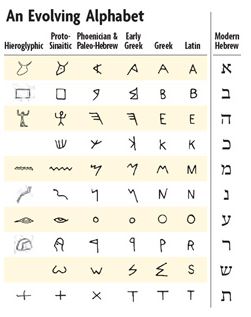
So an Ah-meh-strah-an minded interpreter might see in the column symbols the sign
of the serpent that Mosheh (Moses) was commanded to lift up upon a pole. The
serpent then, isn’t just any venomous snake, but a “saraph”
(שָׂרָף
) so named because
of its “fiery” appearance and/or the “burning” effect of its venom.
(Bemidbar
(Num.) 21:6-9,
Yesha’Yahu (Is.) 14:29)
Thus:
 (fiery serpent) =
saraph (שָׂרָף) = Heb. letter
sin (שׂ) (fiery serpent) =
saraph (שָׂרָף) = Heb. letter
sin (שׂ)
Likewise, the
N-water ripple hieroglyph (N35)
( ),
to the Ah-meh-strah-an mind, signifies more than just water. For one
thing, the Egyptian symbol carries the phonetic value “n”, which happens to
be the first sound in the Greek word “Neilos” (Νειλος) from which we get the
word “Nile”. But the Gentile/Semitic word “Nile” corresponds to the Egyptian loanword “Y’or” (יְאוֹר), as in Shemot (Ex.)
2:3, so: ),
to the Ah-meh-strah-an mind, signifies more than just water. For one
thing, the Egyptian symbol carries the phonetic value “n”, which happens to
be the first sound in the Greek word “Neilos” (Νειλος) from which we get the
word “Nile”. But the Gentile/Semitic word “Nile” corresponds to the Egyptian loanword “Y’or” (יְאוֹר), as in Shemot (Ex.)
2:3, so:
 (waters
of the
Nile) = Neilos (Νεῖλος) = Y’or (יְאוֹר) = Heb. letter yod
(י)
(waters
of the
Nile) = Neilos (Νεῖλος) = Y’or (יְאוֹר) = Heb. letter yod
(י)
Now
it’s important to
note that the hieratic script character equivalent to “n”, takes a simplified linear form:

The reverse, or mirror image of
the symbol
 also appears in Egyptian texts.
A mirror image match for this hieratic character appears repeatedly in Joseph Smith’s
Grammar & Alphabet of the Ah-meh-strah-an Language. See of example the
bottom of
page 9 of the strange manuscript. You may
also wish to see
page 13,
17, and
21 of various Ah-meh-strah-an degrees. also appears in Egyptian texts.
A mirror image match for this hieratic character appears repeatedly in Joseph Smith’s
Grammar & Alphabet of the Ah-meh-strah-an Language. See of example the
bottom of
page 9 of the strange manuscript. You may
also wish to see
page 13,
17, and
21 of various Ah-meh-strah-an degrees.
Finally, the “papyrus reed”
hieroglyph ( )
can be translated “eveh” (אֵבֶה);
all three letters of which happen to occur in order, in the name “Avraham” (אַבְרָהָם). What is more,
the word “eveh” appears in Hebrew scripture describing the light
weight material (papyrus) out of which swift ships are built.
(Iyov
(Job) 9:26, see also Yesha’Yahu
(Is.) 18:2;
and
B-D-B-G Hebrew Lexicon, 16,
אֵבֶה,
pg. 3).
Thus: )
can be translated “eveh” (אֵבֶה);
all three letters of which happen to occur in order, in the name “Avraham” (אַבְרָהָם). What is more,
the word “eveh” appears in Hebrew scripture describing the light
weight material (papyrus) out of which swift ships are built.
(Iyov
(Job) 9:26, see also Yesha’Yahu
(Is.) 18:2;
and
B-D-B-G Hebrew Lexicon, 16,
אֵבֶה,
pg. 3).
Thus:
 (papyrus reed) = eveh (אֵבֶה) = Heb. letter
aleph (א) (papyrus reed) = eveh (אֵבֶה) = Heb. letter
aleph (א)
The first three phonograms (letters, read from right to left, top to bottom)
are sufficient to phonetically simulate the Hebrew word “n’si”,
which means “exalted one”, “chief”, “prince”, as in the honored description
“n’si Elohim” bestowed on Avraham! The exalted title
literally means “prince of God(s)”,
but is translated “mighty prince” (KJV).
See
Bereshit
(Gen.) 23:6.
The presence of the aleph makes for exact Hebrew spelling -
נְשִׂיא
,
as well as symbolic reference to the Exalted Father.
Thus the column above the raised
hand of Maat may, in Ah-meh-strah-an fashion, read:
 = “Prince [of]|Osiris,|Foremost
of the Western hill country (Heb. Har)”
= “Prince [of]|Osiris,|Foremost
of the Western hill country (Heb. Har)”
So a Hebrew word for “prince”, “n’si”, begins with the letter nun. It just so happens that the Ah-meh-strah-ans
reinterpreted the hieratic Egyptian water symbol, “n”, , near the top
of the column above Maat’s hand, to signify “Ho-e-oop
A prince of the royal blood ...”: , near the top
of the column above Maat’s hand, to signify “Ho-e-oop
A prince of the royal blood ...”:

See for instance the symbol on the left, on
page 4 of the 5th Degree of Joseph Smith’s
Grammar & Alphabet of the Ah-meh-strah-an Language. Of course this does not
represent standard Egyptian interpretation! This is the esoteric language of the Ah-meh-strah-an’s. The Hebrew “n’si”
underpinning the esoteric interpretation, helps explain why the Ah-meh-strah-ans would
choose the hieratic Egyptian “n” symbol to represent “A prince of the royal blood”.
It happens that the Hebrew word for fiery serpent, “saraph” contains another Hebrew word for “prince”, the word “sar”
(שַׂר).
Thus we have both fire and water emblems representing an anointed prince.
For additional Ah-meh-strah-an insights into these symbols see
Princess of On.
As if this were not enough
to assert the presence of the Prince,
the ancient root of the word “n’si” can be seen in the column.
Here it helps to recognize that the “fiery serpent” is also a “nahash”
in Hebrew
(Bemidbar (Num.) 21:6),
“reed” is also “suph” (spelled with a samekh, as in “Yam Suph”, “Reed Sea”, Red Sea,
Shemot (Ex.) 15:4), and
“aph” spelled with an aleph, means “nose, face, anger”.
(Bereshit
(Gen.) 24:47, Yesha’Yahu
(Is.) 48:9)
We may then see the word:
 = nasa = lift up
= exalt. The Hebrew word "nasa" is ordinarily spelled with a sin
(
= nasa = lift up
= exalt. The Hebrew word "nasa" is ordinarily spelled with a sin
( שׂ), but the samekh
exception is noted in the lexicon.
Samakh
in fact, connotes “raise”,
“support”, “be high”, “ascend”. The verb is used in connection with
supporting or laying hands on a sacrificial victim.
(e.g. Vayiqra
(Lev.) 1:4; B-D-B-G Hebrew Lexicon,
5564, סָמַך,
pg. 701) Note also the Hebrew word “nes” astride the pole-like
sign.
Even if
one is blind to Hebraic connections, reference to the exalted god-prince Hor can be
seen in the columns following the
preamble that Maat points to. The complete translation according to
Rhodes reads: “(1) Words spoken by Osiris, the Foremost of the Westerners:
(2) May you, Osiris Hor, abide at (3) the side of the
throne of his greatness.”
(The Hor
Book of Breathing, pp. 24-25,
emphasis added)
Thus
the words of Osiris, refer to the exalted son Horus, and the deceased who
bears his name. The point is; Word
of Osiris = Prince Hor.
The
preamble could be interpreted to read “Prince of the Eye of the divine
thrown, Foremost of the Western land (afterlife).” The symbolic and
spiritual minded might go further and interpret “Word (Prince) of God, First
of the Spirit World”.
The approach the Prophet Joseph Smith takes is to transform the Horus afterlife
vignettes, from scenes exclusively featuring immortals, to earth bound
scenes of mortal drama. “Word of God, First of the Spirit World”,
or “Prince of Osiris (Pharaoh in death), Foremost of the Western land” is
then sublimely represented (for those with eyes to see) in the earthly “Prince of Pharaoh, King of Egypt”
.
Fig. 5. Represents the soul conducted before the throne of Osiris. The
soul in this case, is Osiris Hor the owner of the funerary scroll, whose body
is washed and anointed. Hor is justified before the throne of Osiris. The
figure is reinterpreted to represent Shulem, one of the king’s principal
waiters, as represented by the characters above his hand.
In other words, as represented by Osiris Hor. The
characters
above his hand
translate “Osiris Hor, the justified forever.”
That being said, there really are “characters” near the raised hand of
Osiris Hor which, put together, simulate the name “Shulem”.
See the characters in front of the deceased.
Think of the feather
symbol as
representing the Egyptian goddess of truth who holds the hand of the
Hebrew waiter. Think of the waiter as being represented by the little
bread bun hieroglyph.
The Egyptian
feather
symbol has the phonetic value “Shu”. The Hebrew word for bread is “lehem”
(לֶחֶם).
We get the following
rebus puzzle:
 +
+
 =
Shu + lehem; sounds like
“
Shulem”.
=
Shu + lehem; sounds like
“
Shulem”.
Hor (Shulem) is responsible for the “peace offering” that Fig. 3 represents. A
Hebrew word for “peace offering” is “shelem”.
(Amos 5:22) There
could be word-play going on between the word “shelem” and the name
“Shulem”. Could the Prophet Joseph Smith have also intend a parallel between the Book of Mormon mount of theophany, har-Shelem
(Ether 3:1;
4:1)
and Hor Shulem?
Anointing the head of “Shulem” (Hor) is a cone of scented “shemen”
(Heb. oil, fat).
The
cone
has an Egyptian lotus (symbol
of the sun) stuck through it.
The divine son Horus, associated as he is with the sun, could
in the Ah-meh-strah-an mind relate to the Persian name Kurus
(Cyrus), or
Koresh.
(Yesha’Yahu
(Is.) 45:1-6,
11)
The divine son Kurus
(meaning the Sun, or Sun-like) is described by Yesha'Yahu as a mashiah (anointed one,
messiah). But “mashiah” sounds a little like “mashqeh”
which can be translated “butler” or “waiter”, more literally a domestic
servant “who brings
drink”, or “causes one to drink”. In fact “Sar ha-meshihim”, “Prince of the
anointed ones”, sounds a lot like “sar ha-mashqim”, “prince of the butlers”
or “chief of the cup bearers” - as in the service of Par’oh mentioned in Hebrew scripture.
See
Bereshit
(Gen.) 40:1-2;
also consider
Yohanan ST John 13:12-16.
The title “Prince of
anointed ones” also brings to mind the messianic title “Prince of Peace”, “Sar-Shalom”
(Yesha’Yahu (Is.) 9:6)
which again might touch upon the diminutive “Shulem”, who in his
lesser way, as a principal waiter, tries to follow, serve, and imitate the Prince.
But, if the name “Shulem” were related to “shalom”, as is the feminine “Shulamit”
(Shir ha-Shirim
(Song) 7:1, 6:13,
KJV), why not go with the masculine name Sh’lomoh
(Solomon)? The answer could be that “Shulem” only sounds like “shalom”,
but in fact derives from a different word.
Osiris Hor is depicted in the first vignette (Facsimile
1, Fig. 2) with his two arms “held up in the classical gesture of praising
or asking” (Rhodes cites the Egyptology Lexicon of Wolfgang Helck and Eberhard Otto:
2:575-76, emphasis added). But in Facsimile 3, Joseph Smith interprets Osiris Hor as “Shulem”,
a principal waiter. Could the
upraised, opened armed gesture of Osiris Hor in the first vignette have something to do with the name “Shulem”
assigned to the apron wearing Osiris Hor in the last vignette?
“Sheol”
is the world of disembodied souls, the “place of inquiry”.
(Yesha’Yahu (Is.) 14:9;
see also
Teachings of the Prophet Joseph Smith, pg. 310) The Hebrew verb
“shaal”
means “ask” or “inquire”. The name “Shaul”
means “asked”, “inquired”.
(1 Shemu-El (1 Sam.) 9:2)
The name “Shulem” could be short for “shaul lahem”, or simply “shaulam”, “asked (inquired, demanded) of
them”. (1 Shemu-El (1 Sam.)
1:27-28,
Consider also “yishal lahem l'shalom”
in
Bereshit (Gen.)
43:27
,
and “yashilum”
in
Shemot (Ex.)
12:36). See also the Hebrew name Metu-shael.
True and faithful, Shulem is one who seeks greater light and knowledge; and in being
brought before Avram (exalted father,
the god), prophet of Elohim, hopes to have his request
granted - his questions answered. See Ed Goble "I cracked the Shulem cryptogram ... !"
Fig. 6.
Represents
Anubis, god of the dead, but reinterpreted here as
Olimlah (“olim-lah” may mean “her male slave”,
“ol” = “yoke”,
see B-D-B-G Hebrew Lexicon, עֹל,עלם
pp. 760-761, H3281),
a slave belonging to the prince (represented by the goddess Maat).
(1
Shemu’El (1
Sam.) 2:8) The Prophet Joseph Smith may have seen in Fig. 6 a representation of
Bereshit (Gen.) 9:25.
See Was a Grandson of Aaron the First Black Hebrew Priest?

M. Rhodes translates: “(1) Words spoken by Anubis who make protection (2)
Lord of heaven. Foremost of (3) the Westerners.”
The
basket symbol (
 )
seen in column (2) can be translated “Lord” or “King”. The Ah-meh-strah-an
interpretations of this symbol, strongly agrees with standard Egyptian. See Joseph Smith’s Ah-meh-strah-an
degrees
page 4,
10,
18,
21. )
seen in column (2) can be translated “Lord” or “King”. The Ah-meh-strah-an
interpretations of this symbol, strongly agrees with standard Egyptian. See Joseph Smith’s Ah-meh-strah-an
degrees
page 4,
10,
18,
21.

The basket symbol listed in the
Ah-meh-strah-an 2nd Degree,
page 18
matches perfectly standard interpretation.

Like the column above the raised hand of Maat, reference to “the prince”
can be interpreted in the columns of characters immediately before the
god-slave Anubis. Note the 1st Degree Ah-meh-strah-an
interpretation of the basket symbol: “Crown of a prince”. Compare this with other
Egyptian crown symbols.
Avram is reasoning upon the principles of Astronomy, in the
king's court. (Josephus,
Antiquities of the Jews, Chapters VII.2, VIII.2)
The bottom line (beneath the
illustration) translates, “The gods of the West [afterlife], the gods of the
cavern [kingdom of the dead], the gods of the south, north, west and east
say: May Osiris Hor, justified, born of Taykhebyt, prosper.”
(Rhodes,
The Hor Book of Breathings
,
pg. 25)

Michael D. Rhodes,
The
Hor Book of Breathings
- A Translation and Commentary,
pg. 24.
[5]
The New Brown – Driver – Briggs –
Gesenius Hebrew and English Lexicon, 5697,
עֲבָרָה, pg.
720.
[6]
Levitical
temples can’t be built and officiated in in just any clime. In
Egypt, Torah compatible temples could only
be built at locations where the right grains (for offerings) could be
obtained in the right seasons of the year. (Shemot (Ex.)
34:18, Vayiqra (Lev.)
23:4-10, Devarim (Deut.)
16:5-6) Two such places were the Nile isle of Elephantine, and at
Leontopolis in the Nile Delta, nearer the Mediterranean Sea. These limited
locations are in the Northern Hemisphere. Lands too far south, near the
equator, and lands in the Southern Hemisphere are out of the question.
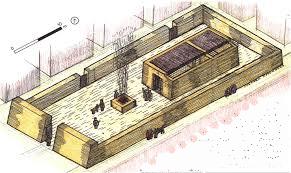
Torah compliant Temple
in Egypt (Elephantine
Island)
[7]
The Hebrew word for “fords”, “avrot”
(2 Shemu’El 15:28) is similar to the Hebrew word translated “plains”, “arvot”
(2 Shemu’El (2
Sam.) 17:16).
[8]
Berlyn, Patricia,
“The
Journey of Terah: To Ur-Kasdim or Urkesh? ”,
Jewish Bible
Quarterly.
[9]
LDS Bible
Map 9.
[10]
Leptogenesis (Book of Jubilees,
circa 150 BCE) 11:3 reads, “And 'Ur, the son of Kesed
[alleged son of Arpakhshad, not the son of Nahor], built the city of
'Ara of the Chaldees, and called its name after his own name and the name of
his father.”, Translated from Ethiopic, which was translated from Greek.
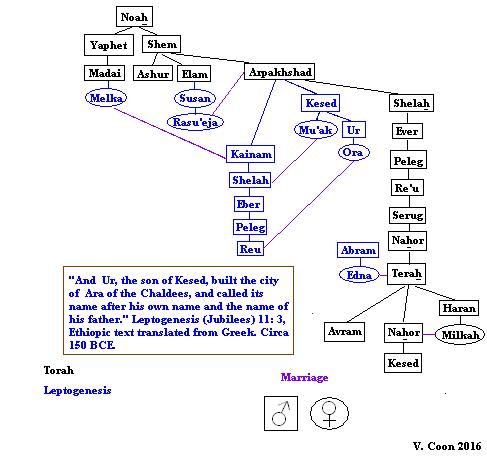
Josephus asserts that “Arphaxad named the Arphaxadites, who are now called
Chaldeans.” (Antiquities of the Jews, Ch. VI.4)
Also
compare Sepher ha-Yasher
(Book of Jasher,
midrash)
XII.37,
XIII.1 with XXII.16-17, 29-30. The Jewish writer clearly understood that the
birth of “Kesed” ben Nahor, “the Kasdim” and “the city Kesed” in
Shinar
all postdated Abram departing “Ur
Casdim”.
Letter of Gratitude for Ed Goble
Having come to the end of this article, are you ready for
Esoteric Egyptian
in the margins of
the Book of Abraham
?
Vincent Coon
וִינְסֶנט
כּוּן
© Copyright 2016
|